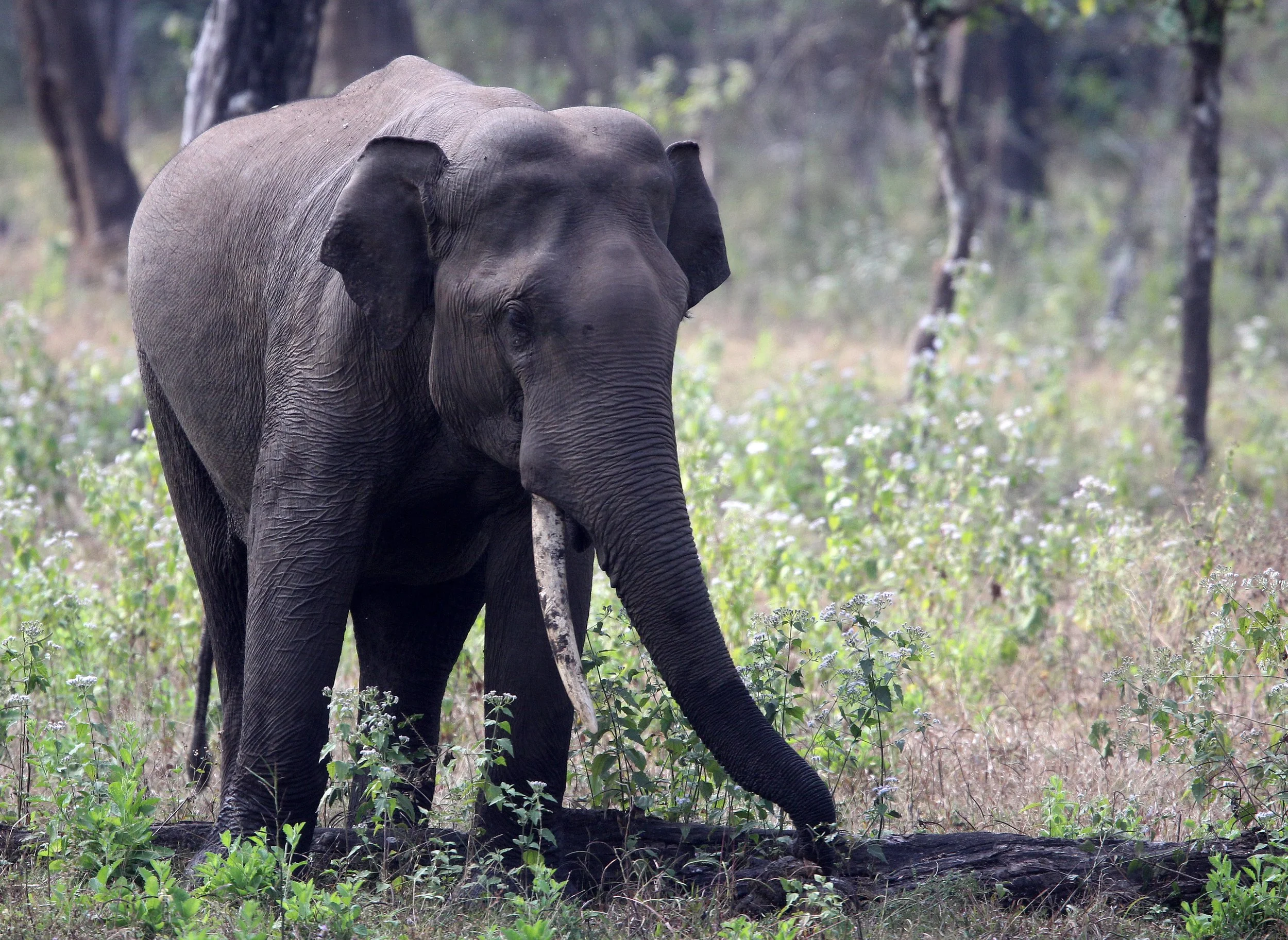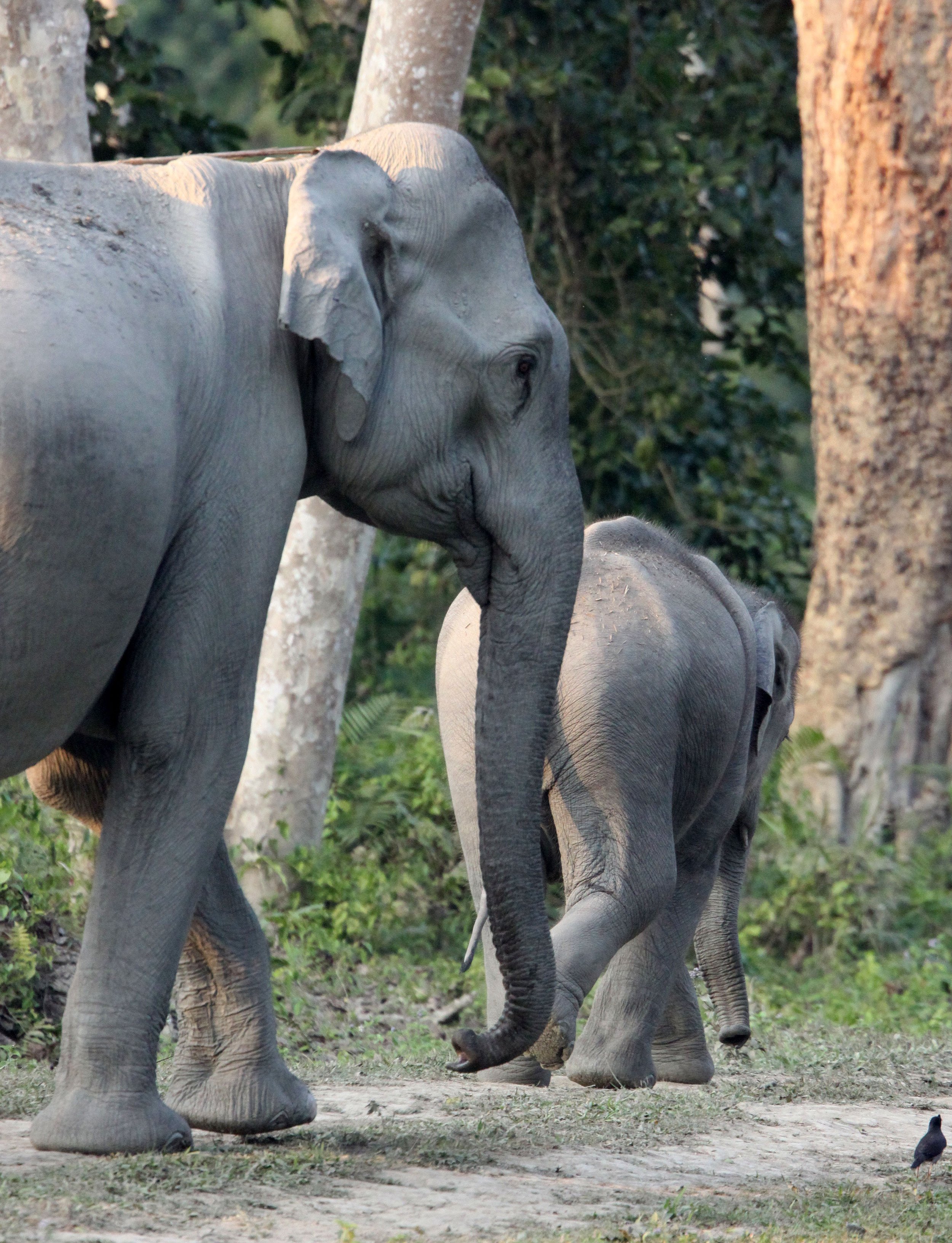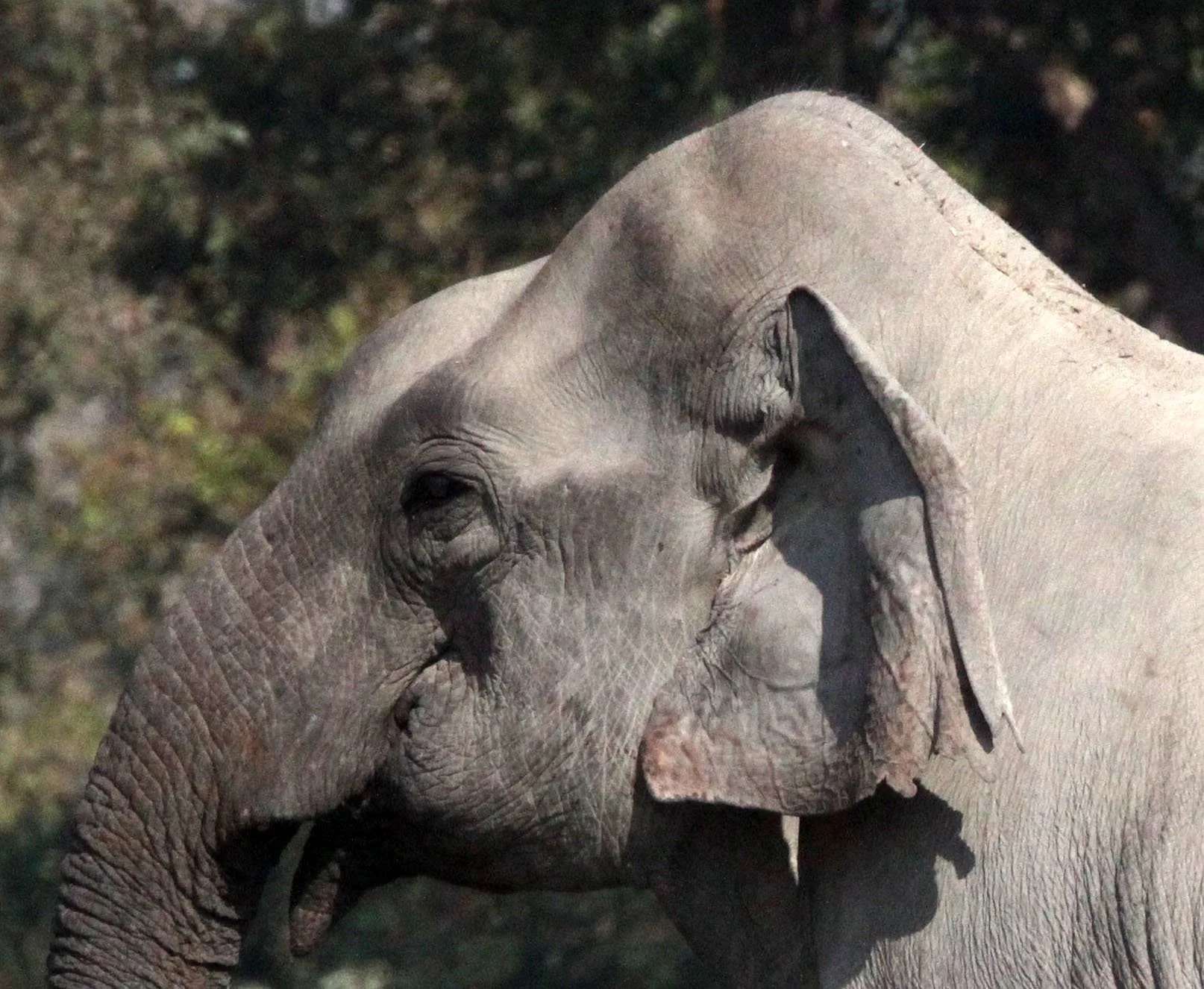
Indian or Asian Elephants (India Populations)
The Indian elephant (Elephas maximus indicus) is one of four extant recognised subspecies of the Asian elephant and native to mainland Asia.
Since 1986, the Asian elephant has been listed as Endangered on the IUCN Red List as the wild population has declined by at least 50% since the 1930s to 1940s, i.e. three elephant generations. The Asian elephant is threatened by habitat loss, degradation and fragmentation.
In general, Asian elephants are smaller than African elephants and have the highest body point on the head. The tip of their trunk has one finger-like process. Their back is convex or level. Indian elephants reach a shoulder height of between 2 and 3.2 m (6.6 and 10.5 ft), weigh between 2,000 and 5,000 kg (4,400 and 11,000 lb), and have 19 pairs of ribs. Their skin colour is lighter than that of E. m. maximus with smaller patches of depigmentation, but darker than that of E. m. sumatranus. Females are usually smaller than males, and have short or no tusks.
The largest Indian elephant was 3.43 m (11.3 ft) high at the shoulder. In 1985, two large elephant bulls were spotted for the first time in Bardia National Park, and named Raja Gaj and Kanchha. They roamed the park area together and occasionally visited female herds. Raja Gaj stood 3.43 m (11.3 ft) tall at the shoulder and had a massive body weight. His forehead and domes were more prominent than in other Asian bull elephants. His appearance has been compared to that of a Stegodon and mammoth due to his high bi-domed shaped head.
Indian elephants have smaller ears, but relatively broader skulls and larger trunks than African elephants. Toes are large and broad. Unlike their African cousins, their abdomen is proportionate with their body weight but the African elephant has a large abdomen as compared to the skulls.
The Indian elephant is native to mainland Asia: India, Nepal, Bangladesh, Bhutan, Myanmar, Thailand, Malay Peninsula, Laos, China, Cambodia, and Vietnam. It is regionally extinct in Pakistan. It inhabits grasslands, dry deciduous, moist deciduous, evergreen and semi-evergreen forests. In the early 1990s, the estimated wild populations included:
27,785–31,368 in India, where populations are restricted to four general areas:
in the Northwest – at the foot of the Himalayas in Uttarakhand and Uttar Pradesh, ranging from Katarniaghat Wildlife Sanctuary to the Yamuna River;
in the Northeast – from the eastern border of Nepal in northern West Bengal through western Assam along the Himalaya foothills as far as the Mishmi Hills, extending into eastern Arunachal Pradesh, the plains of upper Assam, and the foothills of Nagaland, to the Garo Hills of Meghalaya through the Khasi Hills, to parts of the lower Brahmaputra plains and Karbi Plateau; isolated herds occur in Tripura, Mizoram, Manipur, and in the Barak Valley districts of Assam:
in the central part – in Odisha, Jharkhand, and in the southern part of West Bengal, with some animals wandering into Chhattisgarh;
in the South – eight populations are fragmented from each other in northern Karnataka, in the crestline of Karnataka–Western Ghats, in Bhadra–Malnad, in Brahmagiri–Nilgiris–Eastern Ghats, in Nilambur–Silent Valley–Coimbatore, in Anamalai–Parambikulam, in Periyar–Srivilliputhur, and one in Agasthyamalai;
100–125 in Nepal, where their range is restricted to a few protected areas in the Terai along the border with India. In 2002, estimates ranged from 106 to 172 resident and migratory elephants, with most of them in Bardia National Park;[10]
150–250 in Bangladesh, where only isolated populations survive in the Chittagong Hills;
250–500 in Bhutan, where their range is limited to protected areas in the south along the border with India;
4,000–5,000 in Myanmar, where populations are highly fragmented, and occur in the northern ranges and Arakan Yoma in western, Pegu Yoma of central Myanmar, Tenasserim and Shan State;
2,500–3,200 in Thailand, mainly in the mountains along the border with Myanmar, with smaller fragmented populations occurring in the peninsula in the south;
2,100–3,100 in Malaysia;
500–1,000 Laos, where they remain widely but patchily distributed in forested areas, both in the highlands and lowlands;
200–250 in China, where they survive only in the prefectures of Xishuangbanna, Simao, and Lincang of southern Yunnan;
250–600 in Cambodia, where they primarily inhabit the mountains of the south-west and in Mondulkiri and Ratanakiri Provinces;
70–150 in the southern parts of Vietnam.



























































































